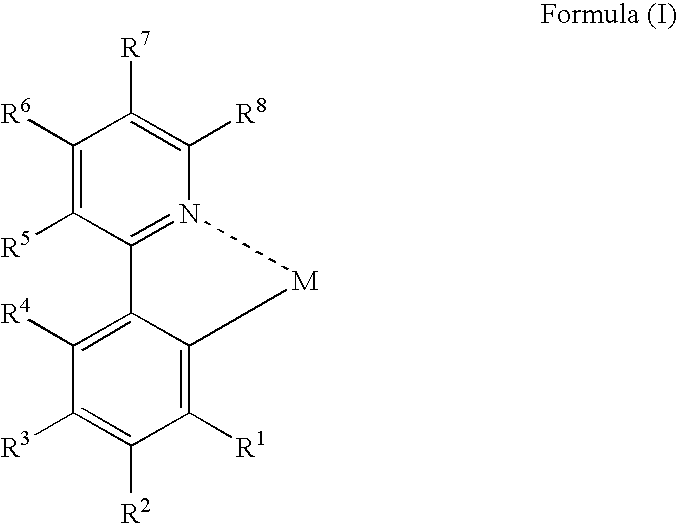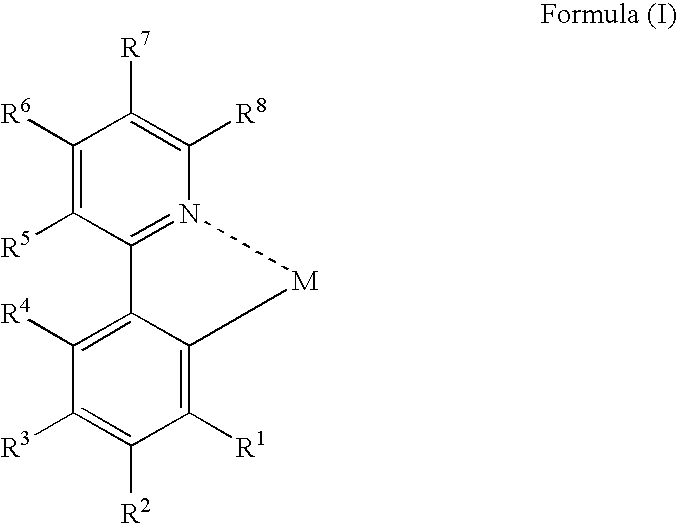Organic electroluminescent device and method for producing the same
a luminescent device and electroluminescent technology, applied in the direction of discharge tube luminescnet screen, other domestic articles, natural mineral layered products, etc., can solve the problems of deterioration of luminescent brightness and durability of luminescent devices, difficulty in maintaining a constant layer thickness, and inferior improvement of production efficiency of dry method (vapor deposition method) for the production of thin film lamination, etc., to achieve high luminescent efficiency, high driving durability, and high brightness
- Summary
- Abstract
- Description
- Claims
- Application Information
AI Technical Summary
Benefits of technology
Problems solved by technology
Method used
Image
Examples
examples
[0111]The luminescent device of the invention will be described in more detail below with reference to the following examples, but the invention is not construed as being limited thereto.
example 7
[0126]A luminescent device of Example 7 was produced in the same manner as in Example 1 except that the hole transport layer was provided by the following wet method.
[0127]6 mg of polyvinylcarbazole (PVK) having a weight average molecular weight of 1,100,000 in polystyrene conversion was dissolved in 1 mL of 1,2-dichloroethane to obtain a solution. The solution was coated on the hole injection layer (formed by vacuum deposition of copper phthalocyanine) by a spin coating method at a rotation rate of 1,000 rpm for 1 second to form a hole transport layer having a thickness of 0.05 μm, and further thereon, a luminescent material Ir-1 and a host material were co-vapor-deposited to form a luminescent layer.
[0128]The resultant luminescent device was evaluated for green luminescent capability in the same manner as in Example 1. The results thus obtained are shown in Table 1.
PUM
| Property | Measurement | Unit |
|---|---|---|
| work function | aaaaa | aaaaa |
| thickness | aaaaa | aaaaa |
| thickness | aaaaa | aaaaa |
Abstract
Description
Claims
Application Information
 Login to View More
Login to View More - R&D
- Intellectual Property
- Life Sciences
- Materials
- Tech Scout
- Unparalleled Data Quality
- Higher Quality Content
- 60% Fewer Hallucinations
Browse by: Latest US Patents, China's latest patents, Technical Efficacy Thesaurus, Application Domain, Technology Topic, Popular Technical Reports.
© 2025 PatSnap. All rights reserved.Legal|Privacy policy|Modern Slavery Act Transparency Statement|Sitemap|About US| Contact US: help@patsnap.com



